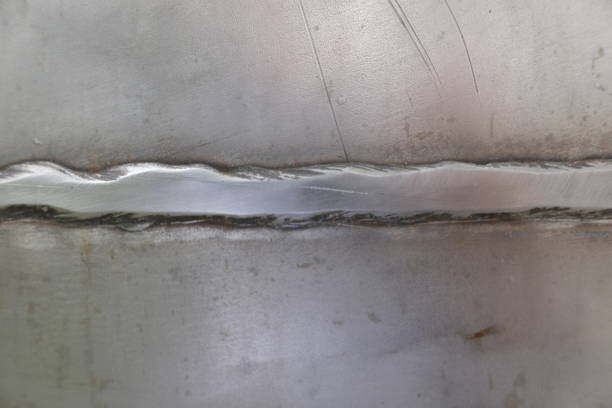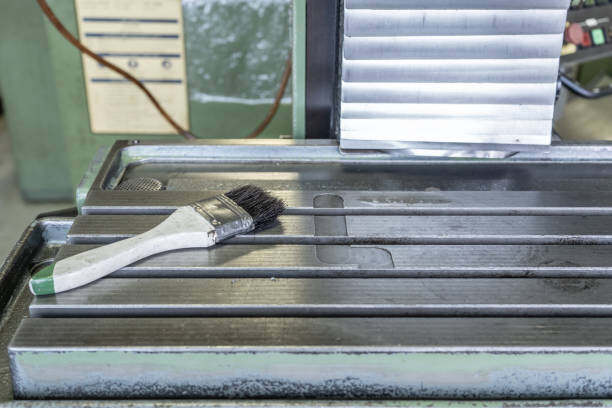When welding aluminum, the first step is often the most critical: ensuring the surfaces are impeccably clean. The quality of your welds can be significantly compromised if you start with dirty aluminum. This guide will walk you through the essential cleaning and preparation techniques for aluminum filler and base metals, ensuring optimal results when you finally strike the arc.

I. Importances of Cleaning Aluminum Before Welding
A welding expert at a local supply shop once emphasized, “Clean, clean, clean!” This mantra underscores the necessity of cleanliness in achieving high-quality aluminum welds. Unlike steel, aluminum requires meticulous preparation due to its unique properties and challenges. Dirty base and filler metals can lead to a host of welding issues, including lack of fusion, porosity, and poor weld penetration. Additionally, aluminum naturally develops an oxide layer when exposed to air, which must be adequately addressed during cleaning.
The Challenges of Welding Aluminum:
Welding aluminum presents distinct challenges compared to other metals. Here are some specific issues to be aware of:
Oxide Layer: Aluminum forms a tough oxide layer that has a higher melting point than the base metal itself. This oxide layer can prevent proper fusion if not adequately removed.
Thermal Conductivity: Aluminum has high thermal conductivity, which can lead to rapid heat dissipation. This characteristic can result in insufficient penetration when welding.
Hydrogen Solubility: Molten aluminum has a high solubility for hydrogen, which can lead to porosity in the weld if moisture is present.
To mitigate these challenges, it’s crucial to eliminate all contaminants, including moisture and hydrocarbons, and to manage the oxide layer effectively.
II. Proper Storage and Handling of Aluminum Filler and Base Metals
The way you store and handle aluminum materials significantly impacts their cleanliness and readiness for welding. Here are some best practices:
Dry Storage: Always store aluminum filler and base metals in a dry environment with minimal temperature fluctuations to avoid condensation.
Vertical Storage: Position aluminum pieces vertically to reduce the risk of moisture accumulation between layers.
Acclimation: Bring filler and base metals into the welding area at least 24 hours before welding. This allows them to reach room temperature and minimizes condensation.
Covering: Keep all filler metals covered before use. Use sealed cases for TIG rods and spool covers for MIG wires to protect them from contaminants.
III. Optimal Joint Preparation for Aluminum Welding
Successful aluminum welding hinges on proper joint preparation. Here are the essential steps to follow:
1. Remove the Oxide Layer:
Mechanically removing the oxide layer is crucial. The most effective method is to use a dedicated stainless steel wire brush. Ensure this brush is exclusively for aluminum to prevent cross-contamination. For heavy pieces or tight spaces, a carbide bur can be used, but be cautious of the air tool exhaust, as it can introduce contaminants.

2. Degrease the Surface:
Before welding, clean the surfaces thoroughly to remove any oil, grease, dirt, or moisture. Here’s how to do it effectively:
Use a Solvent: Choose a solvent that leaves no residue. Avoid chlorinated solvents, as they can produce toxic gases when exposed to the welding arc.
Wipe Down: After degreasing, use a cheesecloth or paper towel to wipe down the surfaces. These materials are porous and can absorb oils and moisture effectively.
Avoid Shop Rags: Don’t use shop rags, as they can transfer oil and dirt back onto the welding surface.
3. Understand Cutting Techniques:
The method you use to cut aluminum can also impact the cleanliness of the weld joint. Here are some recommended practices:
Preferred Cutting Methods: Use plasma arc cutting, gouging, or laser cutting. These methods are less likely to introduce hydrogen and moisture into the oxide layer.
Avoid Smearing: Avoid cutting methods that leave a smeared surface. For example, high-speed circular saws can be suitable, while band saws may lead to smearing.
Minimize Lubricants: If possible, do not use lubricants during cutting. Petroleum-based lubricants can break down during welding, introducing hydrogen and leading to porosity.
IV. FAQs About Cleaning Aluminum Before Welding
Here are some common questions and answers to help clarify the cleaning and preparation process:
Q1: Is it okay to weld dirty aluminum?
No! Always clean aluminum joints before welding to avoid common issues such as lack of fusion and porosity. Factory-fresh aluminum often has oils and grease, so degreasing is essential.
Q2: How do I remove aluminum oxide before welding?
Use a dedicated stainless steel wire brush after solvent cleaning to remove the oxide layer. For heavier pieces, a carbide bur can be effective, but ensure the air tool is free of contaminants.
Q3: What is the best solvent for cleaning aluminum?
Look for a solvent that leaves no residue. Avoid chlorinated solvents in the welding area to prevent toxic gas formation during welding.
Q4: Can I use a wire brush on aluminum?
You can use a stainless steel wire brush, but only after solvent cleaning. Brushing before cleaning can embed contaminants into the surface, making the brush unsuitable for cleaning.
Q5: What other considerations should I keep in mind?
Avoid using oxy-fuel gas cutting or carbon arc gouging, as these methods can damage the heat-affected zone and promote oxide growth. Mechanically remove the melted edges from specific aluminum alloys, as they may contain solidification cracks.
VI. Conclusion
Cleaning and preparing aluminum for welding is a crucial step that should never be overlooked. By following these guidelines, you can ensure that your welds are strong, clean, and free from defects. Remember, the mantra for welding aluminum is “clean, clean, clean!” By prioritizing cleanliness and proper preparation, you’ll set yourself up for success in your welding projects.
For any further questions or detailed explanations of specific techniques, you can go through the Megmeet welding techniques guide center!
Related articles:
1. 3 Common Types of Welding Techniques Used for Aluminum
2. How to Weld Aluminum with Inverter-Based Power Supplies?
3. How to TIG Weld Aluminum: A Beginner's Guide
4. Guide to Welding Aluminum Tubing - Megmeet Welding
5. How to Successfully MIG Weld Aluminum [Guide]?





